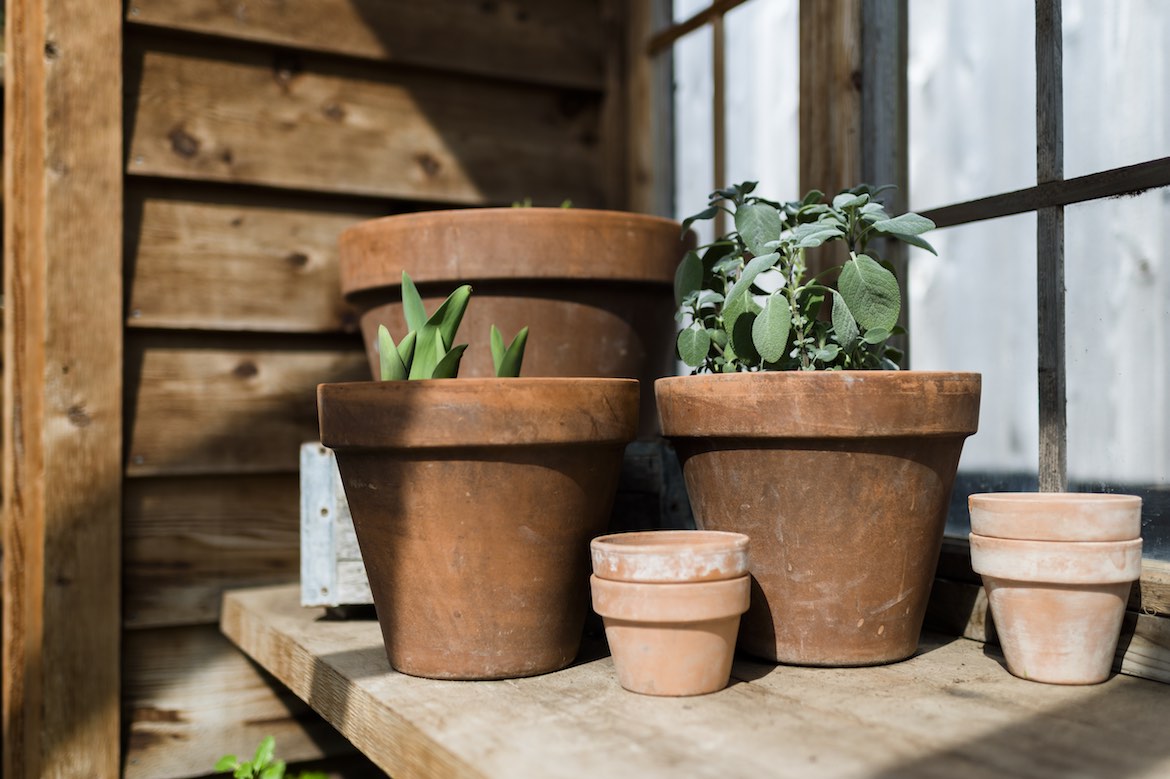Terracotta pots are good for plants because they allow the roots to breathe and prevent the plant from becoming too wet. They are also relatively inexpensive and can be found at most garden stores.
When it comes to planting, there are a variety of materials you can use for your pots or planters. One type of material you may come across is terracotta. Terracotta is a clay-based material that is fired in a kiln, making it strong and durable.
It also has natural drainage and aeration properties, which makes it a good choice for plants. There are some things to keep in mind if you’re thinking about using terracotta pots for your plants. First, they do tend to be on the heavy side, so make sure you have a sturdy surface to put them on.
They’re also not the best choice for plants that need a lot of water, as they can dry out quickly. But overall, terracotta pots can make great homes for your plants!
TERRACOTTA vs PLASTIC POTS!
What Plants Do Well in Terracotta Pots?
There are a number of plants that do well in terracotta pots. These include:
- succulents
- aloe vera
- ivy
- philodendrons
- snake plants
Can Plants Absorb Water Through Terracotta?
It is a common misconception that plants can only absorb water through their roots. While it is true that the roots are the primary organs for taking up water, many plants are able to absorb moisture through other parts of their bodies, including their leaves and stems. One type of plant that is particularly good at absorbing water through its leaves is the terracotta plant.
The terracotta plant is native to Africa and gets its name from its reddish-brown coloration. The leaves of this plant are covered in tiny pores, which allow it to take in water vapor from the air. This ability to absorb water through its leaves helps the terracotta plant survive in dry conditions.
So, if you’re wondering whether your plants can benefit from being watered with a terracotta pot, the answer is yes! The porous nature of terracotta allows water to seep slowly into the soil, giving your plants a steady supply of moisture.
Can You Overwater in Terracotta?
It is possible to overwater in terracotta, but it is not recommended. Terracotta is a porous material, which means that it can absorb water from the soil and release it back into the air. This process can cause the terracotta to crack or break down over time.

What Plants Don’t Like Terracotta Pots?
While terracotta pots are a classic choice for many plants, there are some that just don’t do well in them. Here’s a look at some of the most common plants that don’t like being grown in terracotta pots:
1. Cacti – Cacti are desert plants and they prefer to be grown in sandy, well-drained soil. Terracotta pots can be quite heavy and compact the soil, making it difficult for cacti roots to spread out and get the air they need.
2. Orchids – Orchids like their roots to be constantly moist but not soggy. Terracotta pots can dry out quickly, especially if they’re placed in a sunny spot, which can stress out or even kill your plant.
3. Ferns – Ferns need high humidity to thrive and unfortunately, terracotta pots don’t provide that kind of environment. The porous nature of terracotta also means that water will evaporate more quickly from the potting mix, further exacerbating the problem.
4. Tropical Plants – Many tropical plants come from rainforests where they grow on tree branches or other surfaces that require good drainage.
When grown in terracotta pots, these plants often suffer because the compacted soil doesn’t drain well and waterlogging can occur easily. If you’re not sure whether your plant will do well in a terracotta pot, it’s always best to err on the side of caution and choose another type of container instead.
Why are Terracotta Pots Bad?
Terracotta pots are bad for a number of reasons. They absorb water, which can lead to root rot, and they’re also susceptible to cracking. In addition, terracotta pots can be difficult to clean and can harbor bacteria.
Get Ready Before Planting in Terracotta Pots
If you’ve forgotten to soak your terracotta pots, don’t despair! There are a few things you can do to salvage the situation. First, try to soak the pots in water for at least an hour.
This will help soften the clay and make it more pliable. If the pots are still too hard to work with, you can try boiling them for a few minutes. Once the pots are softened, you can begin shaping them into whatever design you desire.
Just be sure to work quickly, as the clay will start to harden again once it cools down. With a little bit of effort, you can still create beautiful terracotta pots even if you forget to soak them first!
Do You Have to Soak Terracotta Pots before Planting?
It is not necessary to soak terracotta pots before planting; however, doing so can help reduce the amount of water the pot will lose through evaporation. If you choose to soak your terracotta pot, fill it with water and allow it to sit for at least an hour before planting.
Conclusion
Terracotta pots are made of natural clay and are a popular choice for indoor and outdoor plants. They are porous, which allows for good drainage, and they help to keep roots cooler in hot weather. Terracotta pots can also be decorated to add personality to your plant collection.
Some people choose terracotta pots for their plants because they believe that the clay helps to absorb nutrients from the soil and make them available to the plant roots.

Leave a Reply